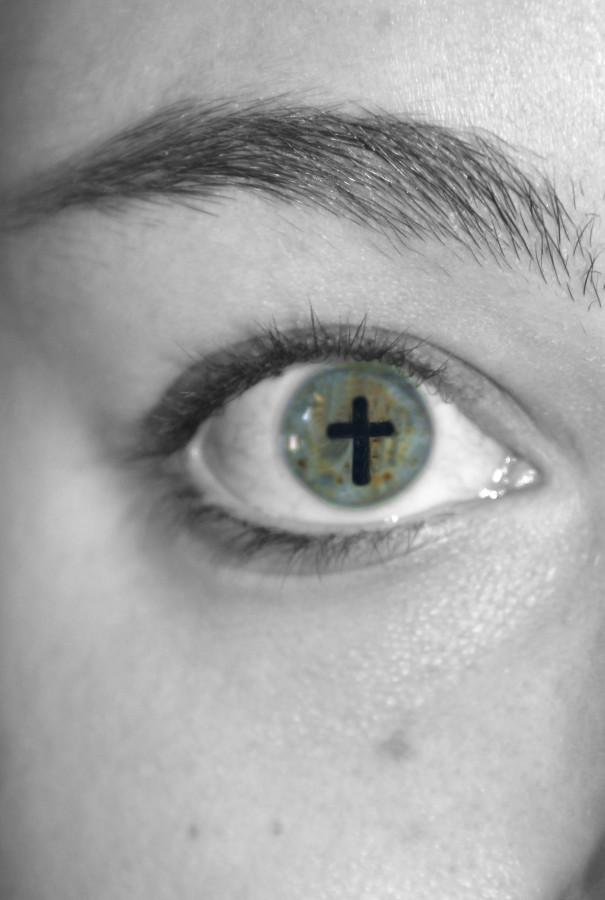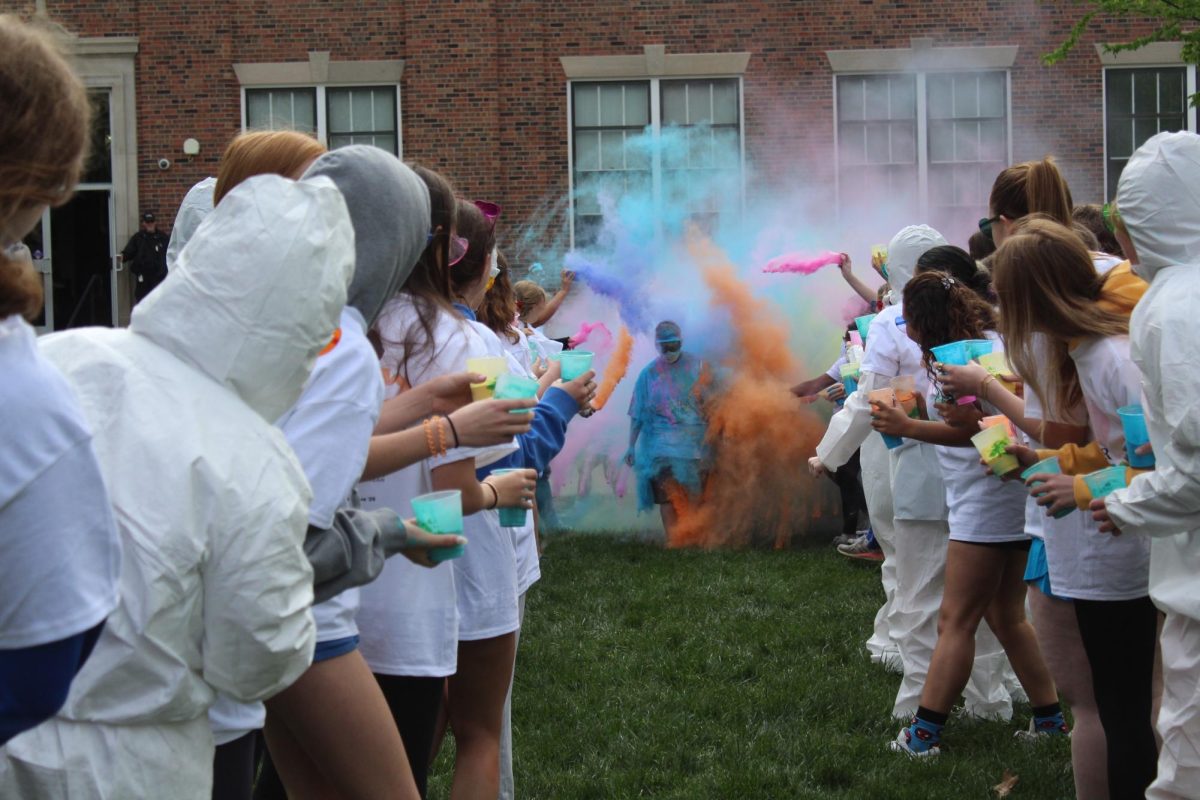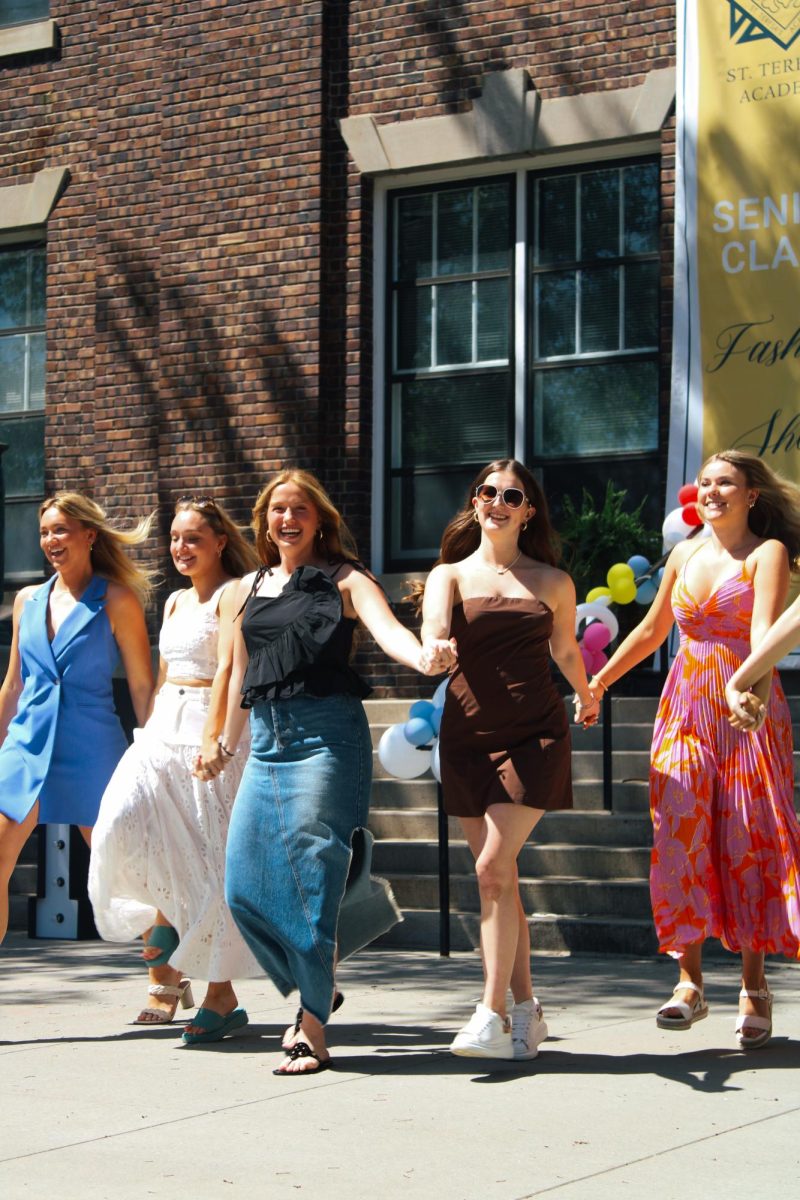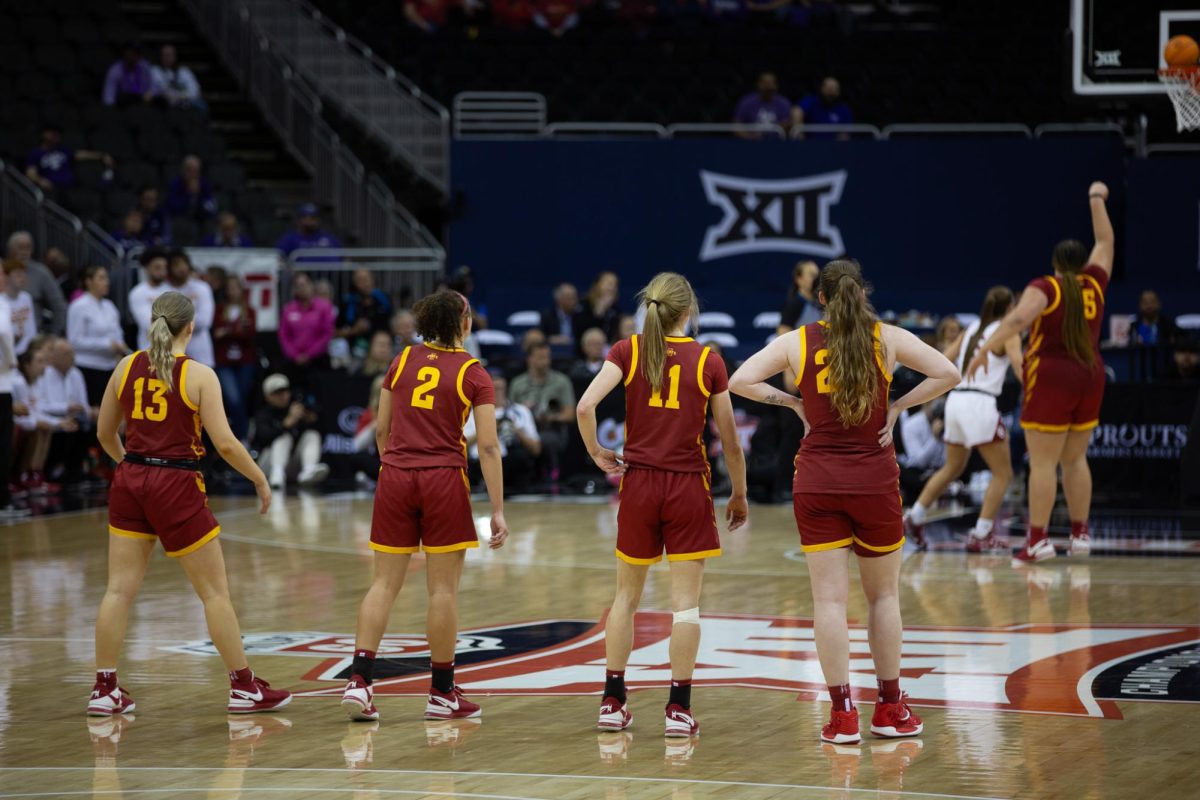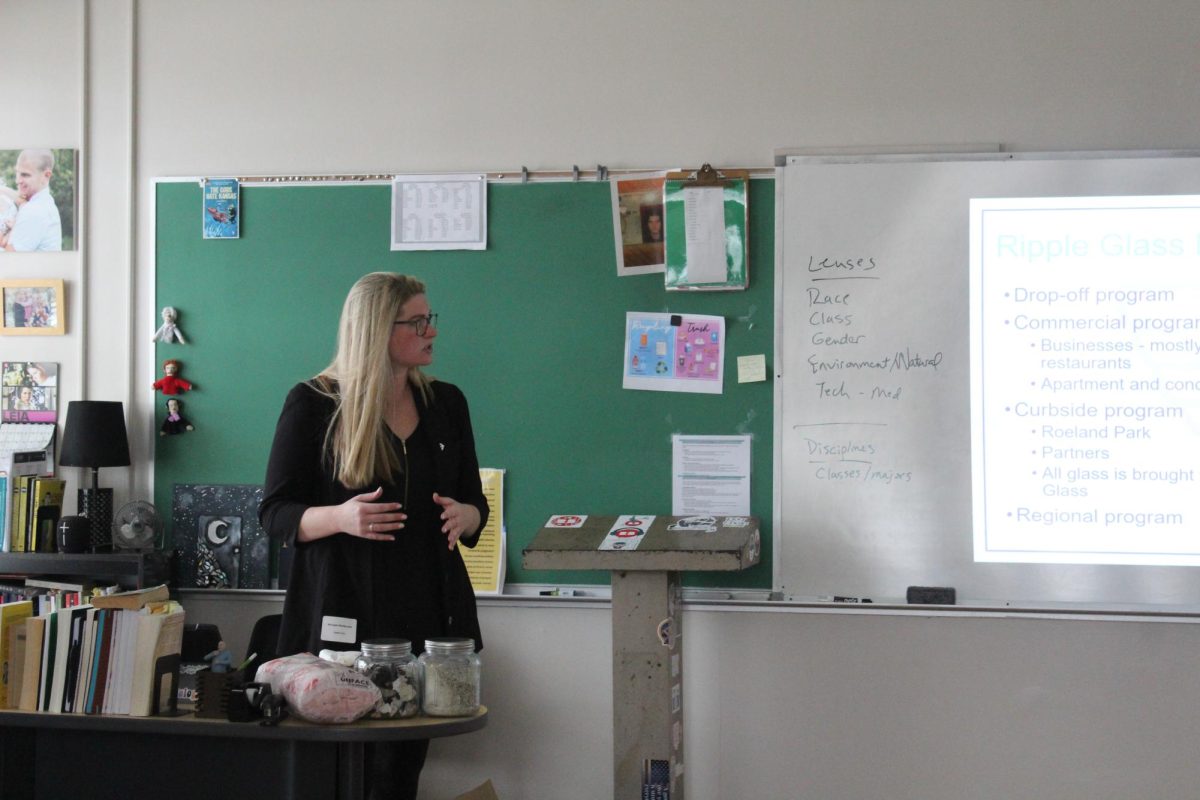story by Jordan Berardi, photos by Jessie Culver and Libby Hyde, alternative coverage by Mary Hilliard
“How is the Roman Catholic Church changing with the election of Pope Francis and with recent changes at STA?” some are asking.
Today, the Roman Catholic Church is less popular with Millennials than with any other generation. However, the church is signaling a new and more accepting shift of ideals that are more widely embraced by today’s teens.
The pope is appealing to a younger generation by speaking about social issues such as homosexuality, birth control and abortion, but not in the same way as previous popes. Pope Francis is less likely to condemn anyone based on these social issues, and is more likely to refrain from judging than predecessors. He famously said to America magazine, “I am a sinner. This the most accurate definition. It is not a figure of speech, a literary genre. I am a sinner.” With this attitude, he has shied away from judgement.
Here at STA, several aspects of the Roman Catholic community have become more prevalent and more frequent. For instance, consider the building of the new chapel, the implementation of class mass, the push for juniors to attend Kairos and the involvement of students in prayer services and masses. According to STA campus ministry staff member Joe LaScala, the school is hoping to strengthen the Catholic faith community through these student-focused changes.
However, the two youngest generations are significantly less religious than their parents and grandparents, according to a project conducted by Pew Research Center.
The project found that only eight percent of American grandparents to most current teens were unaffiliated with a religion. This percentage rose to 13 percent with their children, the Baby Boomers (born between 1946 and 1964). Again the percentage swelled with the Millennials and has reached an unaffiliated population of 26 percent. Every year, more and younger people are falling away from the church, Catholic and otherwise.
What is Pope Francis doing to fix this trend?
On March 13, 2013, Jorge Mario Bergoglio, now Pope Francis, was elected the 266th Pope of the Roman Catholic Church. In the 10 months of his papacy, Pope Francis has made several statements which express his views on the church as it stands and his hopes for its future.
Foremost to Francis’s mission is his commitment to serving the poor. Pope Francis attended the World Economic Forum in Davos, Switzerland on Jan. 21 and said, “I ask you to ensure that humanity is served by wealth and not ruled by it.”
Pope Francis has also been open about his liberal views on several social issues surrounding the Roman Catholic Church. To a group of reporters aboard a plane asking his view on homosexual priests, Francis made a heavily publicized statement saying, “If a person is gay and seeks God and has good will, who am I to judge him?”
However, Francis has asked leaders of the church to be not solely focused on issues such as this and other social issues such as contraception and abortion. He said, “The pastoral ministry cannot be obsessed with the transmission of a disjointed multitude of doctrines to be imposed insistently.”
In addition to the pope expressing more liberal views on such things as homosexuality and giving to the poor, he has chosen to live his papal life modestly.
Pope Francis lives not in the papal palace, but instead in a two-bedroom apartment. In an interview with America magazine, while sitting in his apartment, he explained the forgoing of living in the papal estate by saying, “I chose to live here, in Room 201, because when I took possession of the papal apartment, inside myself I distinctly heard a ‘no.’”
The president of Kansas City’s Rockhurst University, Fr. Thomas Curran wrote an article published by National Catholic Reporter titled “Church historian: Francis could be moving church to new area of reform.” He wrote that the Pope’s outward exposure of his personal beliefs of a modest life as well as his addressing of social issues has made him a topic of conversation.
“It is exciting, this message that is capturing the mind of people around the world, both Catholic and non-Catholic,” Curran wrote. “Everyone is talking about Francis.”
According to Charity Sr. Diane Steele, president of the University of Saint Mary in Leavenworth, Ks. in the same NCR article, the Pope’s inclusiveness is helping move toward “restoring the image of the Catholic Church in the eyes of young people.”
Cardinal Timothy Dolan agrees. Dolan, who is the president of the United States Conference of Catholic Bishops, believes the church’s need for restoration and commitment comes from the “sinful behavior” of Catholic clergy. The sexual abuse scandals throughout the United States have hit close to home with a recent convictions of a Kansas City clergy members.
On Sep. 6, 2012, the bishop of the Kansas City-St. Joseph, Mo. diocese, Bishop Robert Finn, was convicted for failing to report Fr. Shawn Ratigan, a former Kansas City pastor, for producing and being in possession of child pornography. Ratigan has also since been convicted.
How is St. Teresa’s theology changing for students?
Though Kansas City has been part of events like these, the STA community has been working toward strengthening the religious life in general, according to LaScala, a leader of STA’s campus ministry.
On Jan. 12, 2012, the Chapel of Saint Joseph opened in the Windmoor Center, a new fourth building providing space for about 150 students at a time. The chapel is now used for various religious and educational activities such as meditation for theology teacher Robin Good’s spirituality class along with class masses.
At the beginning of the school year in 2011, campus ministry implemented class masses: Catholic celebrations for a different graduating class each Wednesday.
“The class masses give us an opportunity to have a few minutes of quiet time to just reflect,” STA president Nan Bone said. “I’m glad we have the opportunity to give that to girls.”
LaScala also believes in the value of involving students in ministry and has been moving toward student-led activities.
“We are trying to get students more involved in the retreats and by having more prayer activities that are interesting to students,” LaScala said.
In 2012, Kairos, the four-day spiritual retreat, was directed toward the junior class rather than exclusively the senior class as it had been before. In an article published in the Dart in 2012 titled “Juniors now encouraged to participate in Kairos retreat,” retreat coordinator Robin Good discussed the retreat being directed toward juniors. The reason? To shift the positive results of Kairos to earlier in a student’s high school experience.
How have students reacted to these changes?
With the transition of the faith life at STA and around the world with the new papacy, many find comfort in the pope’s message.
“I think the pope is a huge reason [Roman] Catholicism is sparking up again, at least among younger crowds,” senior Abby Dearth said. “He is making it kind of cool to be Catholic again.”
A Quinnipiac University poll found in October 2013 shows 89 percent of American Catholics have a “favorable” or “very favorable” opinion of Pope Francis. Only 4 percent have an unfavorable opinion, according to the poll.
STA senior Mattie O’Boyle finds herself to be part of the 89 percent who favor the Pope.
“I feel like the pope is bringing it back to the basics of what our faith should look like and I think that’s better than focusing on the rules and regulations of the church,” O’Boyle said.
According to Dearth, “[Pope Francis] has made incredible strides because he is appealing to a generally less religious youth.”
However, several conservative political leaders such as Texas senator Ted Cruz and former Alaska governor Sarah Palin have publicly expressed their discontent with the pope.
What kind of relationship do teens want with religion?
As Milllenials identify less any specific religion, Roman Catholicism specifically has also seen a decrease in interest among teens and young adults. According to a separate study conducted by Pew Research Center, one in 10 adults under the age of 30 has left the Catholic faith after having been raised Catholic. Half of those who left the Catholic Church did so before the age of 18, according to the study titled “Religion Among Millennials.”
The reason for leaving the Catholic Church remains unique to each person. However, according to the same study, “not believing in the religion’s teachings” was attributed to the disaffiliation of 65 percent of previously Catholic-affiliated adults between 18 and 30 years old.
Because a large majority of STA students were raised Catholic and are actively engaging in ideas of the Roman Catholic Church through school masses, daily prayer and religious curriculum, Catholicism remains central to STA. However, with the generational shift in religious importance, some STA students find they are part of the 10.1 percent who were raised Catholic and have since left the faith.
[nggallery id=714]
Before attending STA, O’Boyle was raised Catholic and attended Catholic services until the summer of 2013. O’Boyle sporadically attended services at a non-denominational Christian church with a friend and former STA student Annie Keel, whose father is a pastor. She began seeing major differences between Catholicism and non-denominational Christianity.
“[The non-denominational Christian church] appealed to me more because it wasn’t about rituals and standing up and sitting down and kneeling [like the Catholic Church is],” O’Boyle said. “It wasn’t so formal.”
O’Boyle’s lack of interest in the formal nature of the Roman Catholic Church is one aspect many teenagers and young adults identify with. Some 32 percent of those who left the Catholic Church between the ages of 18 and 30 were “dissatisfied with the atmosphere at worship services,” according to the Pew Research Center.
Dearth was also raised Catholic and has since identified more with the non-denominational Christian church similar to O’Boyle. Dearth also says the ritualistic nature of the Catholic Church played a factor in her disinterest in the religion.
“Catholicism is more of a set of rules and principles you have to follow in a certain way,” Dearth said. “That kind of turned me away because I like having freedom with my faith.”
This trait of wanting freedom and disliking a set of rules is a common characteristic of the Millennials, according to a different Pew project which studied social and demographic trends. Consequently, the Catholic Church is becoming less popular among some Millennials.
However, freshman Allison Nagle feels the modern Catholic Church has veered from its traditional roots and dislikes this change. Nagle, who plans to pursue life as a nun, sees the structure nature of the Roman Catholic Church to be diminishing. Nagle attends traditional Catholic mass at St. Rose Philippine Catholic Church, which is in Latin and includes various aspects of the Catholic traditions before Vatican II.
“I think the church is really trying to get the youth involved by putting in these happy songs with clapping and stuff,” Nagle said. “And that’s fine, it’s how some people like it, but … that’s what turned me away [from the non-traditional masses].”
Nagle believes the Roman Catholic Church is changing its mass rituals to accommodate the youngest generation. She recognizes Millennials other than herself see the rituals as traditional and “boring.” The Pew Center’s research bears this out. Their study says this generation is seeking entertainment and stimulation. According to Pew, going to mass and following the same ritual weekly is not appealing to the common millennial.
Though Millennials are statistically less likely to be affiliated to any specific religion, STA intends to grow in ministry and appeal to the changing religious interests of students, according to Bone.
Bone believes Pope Francis is dedicated to “unifying the whole Catholic community all around the word.” This sense of strengthening a community is also found in the faith community at STA.
“If we just think ‘what would Jesus do?’ when we live our lives, then I think we are taking the message of Pope Francis,” Bone said.
[nggallery id=719]



